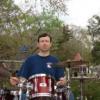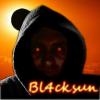
Posted
Motivated by a post in the feature suggestions forum, I'd like to encourage everyone to join a discussion about rhythm. I'll start with a short description of how I do it. There are many ways to build a groove. I've picked this one, because it is different
Workflow
As a solid basis for a song, I need a working groove of only 4 bars length for 3 instruments (a rhythm instrument, e.g. organ/piano/guitar, bass and drums - in that order). From there on, I develop everything else by applying variations, mutes, transpositions, retrograde, doubling speed, etc. So the basic workflow is
1. Build a short and dense working groove (4-8 bars)
2. Make copies and thin them out for use in different sections
3. Add variety by modifying the phrases
It is really not that difficult, unless you are absolutely reluctant to getting out of your chair and touching a physical MIDI keyboard. I can not stress enough: Get yourself a MIDI keyboard! It is near impossible to create a groove without. Even the cheapest $40 KORG nanoKey will do better than your mouse.
Tempo
Get up, imagine your song playing and move to it, humming a melody or whatever instrument is dominant in your imagination. Snip your fingers. Tap the tempo on Synfire's tempo parameter. Tap for at least 12 beats for the average tempo to settle.
Carefully Examine Examples
I would say 90% of composing is listening. Listen to your favorite CDs and look for existing grooves using that tempo range. Notice how bass and rhythm instrument interact with each other. Is there a swing factor? Is it syncopated or straight? Uplifting or down beat? Rolling smoothly or pushing you back-and-forth? Imagine how that instrument would play in your hand (or at your mouth, or whatever). Feel the physics. Even the most minimal techno beat resembles physical motion, so feel it.
Get an idea whether a certain motion effect that you notice is due to the sound alone (filter sweep, reversal, compression, delay, etc), or the actual notes being played. Focus on the notes now and remember the effect for later. Also carefully listen where the effect is achieved by combining two instruments.
Make it Work Without Drums
A great groove works entirely without drums (sometimes even better). If not, you've made a mistake. Add drums to emphasize and enhance the groove, rather than the other way round. Use drums to add dynamics, room, impact and frequency spectrum. Make it complementary to the rhythm instrument (not doubling it). Yes, the bass should meet the bass drum, but not all the time. Even styles that mainly build on drums (D&B, breakbeat, Rap/Hiphop, etc) need to work with the drums temporarily removed.
Make the bass down-beat (heavy) and the rhythm instrument up-beat (light). Don't let both instruments play all the time. Use rests (pauses) of one instrument to have the other instrument start a new phrase and vice versa. This gets your groove rolling. Use the armed span feature and overdub to record small phrases incrementally.
The most boring beats result from running a drum loop and adding instruments on top. Go the other way round and you'll get stunning results.
Tempo, Tuplets, Half-Time, Off-Beat
Experiment with double and half tempo on drums and instruments. Mixing 4/4 and 6/8 time can have a great effect. Emphasize a down beat with the bass every 2nd time only. Hit the snare every 2nd time only. All this adds more breathing to your groove. Add rim shots, claves or similar 1/16 before the beat. Experiment with this kind of off-beat accents. Don't think binary (on/off) unless you want minimal techno.
Use Inspiring Harmony
While you can build a groove entirely based on the default C Major chord, you will get better ideas using a chord that suits your genre. Stay with a single chord or two related chords. Add harmony later.
Dont Care About Conventions
Dare being wild, unconventional, extreme and passionate. Follow your own imagination. In the final mix, the groove will always sound softer and your song will always be perceived more conventional that expected. Put in the spice now so you have something to thin out later.
I must stop now, because my time is limited. I hope some of the above is inspiring and motivating. If you have anything to share, go ahead. This thread is all about groove!
Wed, 2012-06-20 - 16:04 Permalink
One thing that Synfire composers would do well to remember is that most Midi files you will find have been created/processed to be notation friendly. This essentially destroys much of the human feel and if you utilize the raw midi data your composition will suffer for it. One way that I see to overcome this is to use Synfire to create your composition and then perform the parts yourself into your DAW.
I would like to read about the workflow of others, how they input, edit, and why they think their method produces a superior result.
Thu, 2012-06-21 - 21:51 Permalink
Their are groove templates you can quantize with, you can find some of Logic's on their yahoo group. Logic has a humanize function where you specify random ranges of change to any parameter.. You can use any sequence (hand played, edited) as a groove template for other tracks. I would imagine all other DAW's do this. Logic as well as other sequences, will quantize the score but not the original file, for the sake of a display.
While many frown on quantize, as unhuman, it is very easy to 'humanize it, thus any midi file is OK, but you want to edit it in a DAW before into SFP. You really want to have the bass and the kick drum in sync, and some snares as well,
Again it's a matter of personal taste.
I don't think there is a superior method of working, it depends on the user and how they work. Some people write right to a score, others record by hand. Some people start in SFP and move to DAW. I've tried a few different methods, and have concluded as I become more knowledgeable, I will leave the method option open as I work on each piece.
Fri, 2012-06-22 - 01:49 Permalink
"Humanize" is a misnomer for "Randomize" and while a very small dose will make a piece feel less robotic, the result is subtle and far from human feeling. (Rubato / tempo variation will do much more for producing a human feel.) Quantize to a groove does not make two detached pieces rhythmically coherent, it simply makes their deviation from the grid uniform. This again does not necessarily make the two figures rhythmically pleasing. The overall groove of a piece (As Andre pointed out) is a result of multiple instruments or voices playing off of each other and the overall (meta) feel it produces. These instruments may not share the same deviation from the grid, in effect quantize to a groove is the same as quantizing to an asymmetric grid.
I feel that because of the harmonic consonance between voices that Synfire easily produces, many Synfire composers overlook the rhythmically meandering result they are producing. I am not well versed with the additional rhythmic features in Synfire but with my short time with the demo I was not able to (easily) produce rhythmic coherence with imported phrases. I know there is much depth to Synfire which I have not yet reached, but I am not easily stumped by new software and found it quite frustrating. Not that I think there is currently a product that is superior to Synfire in this regard (Not unless David Cope decides to release Emilly Howell to the public.), I just have high hopes for it.
Fri, 2012-06-22 - 04:04 Permalink
I take you have not tried or found the full potential to Logic Pro. Half the point of SFP, is that you import your SFP files into a DAW to deal with finer control of certain parameters, (cc's filters, rhythm adsrs, program changes on same channel), which SFP does not give you in the rhythm department.
Andre has so far purposely left most of the standard DAW features out, because it would be re-inventing the wheel. Also understand, yes, SFP is very complicated and some users are not interested in the areas that you are (at least not yet).
Post your questions, observations, and Andre and Supertonic (the two most adept with SFP will have some kind of answer for you).
Fri, 2012-06-22 - 05:14 Permalink
At the moment I work in Pro Tools for audio heavy songs and Ableton Live for electronic or midi heavy arrangements, although I am seriously considering switching to Cubase because of its strong midi functionality and competancy with audio. After doing much research between Logic and Cubase I feel that Cubase edges out Logic in midi functionality and as I am not confident in Apple's continued support for the professional market (As evidenced by a lack of update for the Mac Pro, Logic and the professional exodus from Final Cut pro because of it's simplification.)
I feel that I am quite competent in humanizing midi parts in my current DAWs. What I find difficult is creating rhythmically compelling content "in the box" (not recording it in). I often resort to this when creating music on a tight deadline or when I am not feeling creatively inspired by a project. I consider rhythm to be the most important aspect of music and essential to the core compositional process rather than something to be adjusted in the DAW later. Harmony Navigator has revolutionized my ability to pump out harmonically rich content in a relatively short period of time. My intent in my original post was to both encourage Synfire's devlopment in rhythm and to draw out knowledge from users and Andre about Synfire's latent abilities in this regard that I am not yet privvy to.
Instead of continuing to complain about all that I hope Synfire can be, I'd like to suggest a methodology (that I've been considering for the past day) for creating rhythmically interesting pieces when one is feeling less than musically inpired.
Find an interesting drum groove.
Drums were designed to be able to make complex grooves on their own and in this example you'd be taking the groove of the drums as the macro groove for your entire rhythm section. Therefore it would be important to find a drum groove more complex/interesting than Kick 1/3, Snare 2/4, hihat playing constant 8th notes etc.
Analyze it, either notationally, aurally or visually (midi/waveform)
Determine what it is about it that you like, Where are the accents? do the cymbals contrast or mimic the kick and snare? do elements anticipate the accents or the downbeat? Do the beats push or pull on the tempo?
Then allocate these aspects to individual voices or instruments
Create appropriate subdivision variations and/or drop notes to reveal just the skeleton of the groove
Occasionally deviate from the groove for a bar or so.
I often like to have my lead lines cross over bar lines/sections and accent the downbeat midway through the phrase (as opposed to starting on beat 1 and ending on beat 4 etc.)
If you have a midi file of this drum groove, seperate the parts (kick, snare, hihat etc) into individual midi files and use these individually as groove templates to quantize your instruments to (eg quantizing a pizzicato string part to the hihat groove.) rather than blanket quantizing all your instruments to a singe groove. Obviously this is only effective if your drum groove is not tight to the grid.
Then do not use that drum groove in your composition or at least adjust it. Find or create a drum groove that complements your composition rather than fights or mimics it. Find what is missing, where elements can be added, and what needs further accentuation.
Hope this helps
EDIT: upon rereading the thread I realize much of what I said is a rehash of what Andre suggested in the first post. Repeat until it sticks I guess.
Fri, 2012-06-22 - 06:18 Permalink
Hi Dying Adonis:
Have you tried playing with the 'Step' feature? That gets me out of a bind sometime
Andre, is it possible for one to add his own quantizer midi files? There is a folder of MPC gtooves which I always find helpful.
For the moment I import a midi file with the rhythmI want , and then paste it to another track. To have your favorite set it in pull down menu would be helpful,
Fri, 2012-06-22 - 07:19 Permalink
splitting up a drum groove is one way to do it. i have been thinking of ways to get the funk feel. like herbie hancocks early 70s tunes. i have been experimenting with sugar bytes thesys for a long time. one thing i am doing with thesys now is splitting the chords and melodies from a track and copying them to different tracks. this way everything is in snyc from the start. try the demo. one thing that would be real cool is if you could drag a phrase from one track to another. just select and alt or ctrl and done. is this possible Andre? here is a track i posted a while back. i used thesys in such a way. then selected chords afterwards. the track has no drums. since i am a drummer i will play them in with a bastard vdrum kit and edit later.
Fri, 2012-06-22 - 08:22 Permalink
Back when MIDI editing was modern yet (now all DAW are focused on Audio), there were specialized tools for humanizing MIDI files, like the Style Enhancer from NTONYX (this tool still exists but is no longer maintained since 2004 I think). For this tool about 500 musical genre style templates for humanizing are available and each style can be modified with several sub-parameters, leading in results from slightly humanized to drastically modified. It even inserts additional notes, if it is required for a specific musical style. I use that tool almost in each of my projects, but of course using it today is like a travel back in time.
It would be very nice if something similar would be integrated into Synfire. Conceptually it would fit well as an extension of the parameter „Variation“, I think. But I think it would be a pretty big effort to implement it. And to program the style templates, surely musicians would be required that are very familiar with the respective musical styles. BTW: Does anyone know something similar to the Style Enhancer?
Fri, 2012-06-22 - 09:06 Permalink
Adonis,
I know this is not what you are referring to and you probably know this already, but it's possible to copy many aspects of one trak to pretty much any other track and parameter. That can be used to create some interesting rythems. So you can copy velocity from your high hat line to the velocity of your lead line or even the control value that affects th filter cut off on that synth. You can obviously alter the resultant pattern, scale, shift, reverse, etc.
Coming back to some of you ideas, I like them... Been thinking that it would be great to have a parameter called say groove that applies to a container a but like harmony does. This could be used to Quantasise against but then patterns and notes could have a setting strong, medium, weak, ignore that affects how closely they gravitate to the groove template in the same way harmony works as well. This obviously would default to just a standar grid so synfire would work as it does now for those people that don't want to get into this extra complexity.
Thoughts?
Fri, 2012-06-22 - 09:23 Permalink
I consider rhythm to be the most important aspect of music and essential to the core compositional process rather than something to be adjusted in the DAW later.
Absolutely agree.
Quantization and humanization however is postprocessing only, whether you apply a different grid to each instrument or not. You need a meaningful phrase for each instrument. That is, each phrase needs to be a valid sentence in the language of music. Then, if these are interwoven time-wise, you will almost instantly get a groove that you can refine with a quantization pattern.
That said, I don't believe a "groove generator" would be successful, except for a very limited selection of styles. It is easier and more productive to gather a collection of short phrases per instrument and try them out in different combinations. This will at least get you creative juices flowing.
The most frustrating aspect of starting a new song is knowing what you actually want. You need a vision of where you want to go. In most cases you will never get there, because new ideas will lead you elsewhere, but it get's you going at last.
Andre, is it possible for one to add his own quantizer midi files?
Not yet. Good idea. It's on the list.
one thing that would be real cool is if you could drag a phrase from one track to another.
You can drag copy the Figure, or any other parameter. If you want to copy the whole phrase, you need to use copy & paste after selecting the instrument name. Otherwise dragging the instrument will only reorder the sheet.
i have been thinking of ways to get the funk feel
The issue with MIDI is it can't easily handle reverse sounds, or sounds with a long attack, without a lot of manual adjusting. These are essential for groove. Motion effects go both directions in time.





